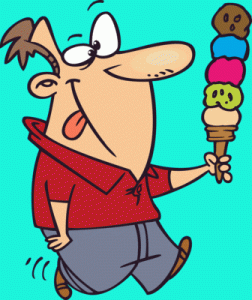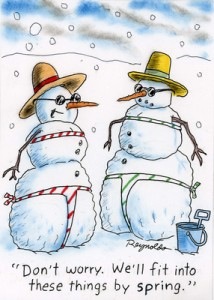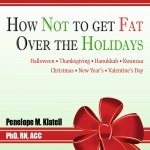 What’s your plan? That sounds clinical — but it doesn’t have to be. It could be your saving grace. Think about how you want to handle yourself in the face of food, family, eggnog, and pecan pie. Nothing is engraved in stone but if you have an idea about what you want to do and how to do it you’ll be far less likely to nibble and nosh all day and night. You’re the one in charge of what goes into your mouth.
What’s your plan? That sounds clinical — but it doesn’t have to be. It could be your saving grace. Think about how you want to handle yourself in the face of food, family, eggnog, and pecan pie. Nothing is engraved in stone but if you have an idea about what you want to do and how to do it you’ll be far less likely to nibble and nosh all day and night. You’re the one in charge of what goes into your mouth.
1. Make simple swaps in the food you prepare and the food you choose at parties and in restaurants. Reduce the amount of fat and calories in holiday food where you can by doing things like using skim milk instead of whole milk, applesauce in place of oil, or two-thirds or one-half of the sugar called for in a recipe. Make a horse trade or a deal with yourself that might have you avoiding the breadbasket or a pre-dinner drink if you are going to have dessert.
2. Beware of food landmines. It’s so easy to be fooled by fatty sauces and dressings on innocent looking vegetables. Vegetables are great. Veggies smothered with butter, cheese, croutons, and/or bacon are loaded with calories.
3. Let this be your mantra: no seconds. Choose your food, fill your plate, and that’s it. Keep a running account in your head of how many hors d’ oeuvre you’ve eaten or how many cookies. Those calories are loaded in fat and add up very quickly. Keep away from spreads of food at home, at the office, or at your Mom’s house to help limit nibbling and noshing.
4. Stop eating before you’re full. If you keep eating until your stomach finally feels full you’ll likely end up feeling stuffed when you do stop eating. It takes a little time for your brain to catch up and realize your stomach is full. A lot of eating is done with your eyes and your eyes love to tell you to try this and to try that. Work on eating a larger portion of fruit and veggies and less of the densely caloric foods like pastas swimming in oil and cheese.
5. Use a fork and knife, a teaspoon rather that a tablespoon. Chew your food instead of wolfing it down. If you have to work at eating your food – cutting with a knife for instance – you’ll eat more mindfully than if you pick food up with your fingers and pop it into your mouth. Before you eat drink some water, a no- or low-calorie beverage, or some clear soup. The liquids fill up your stomach and leave less room for the high calorie stuff. If you know you’re going to eat treats, pick one – and only one – portion controlled treat to eat each day. Pick it ahead of time and commit to your choice so you don’t find yourself wavering in the face of temptation.
6. Plan ahead, commit to your plan, and don’t go to a party or dinner feeling ravenous. Before you go eat a small healthy snack that‘s around 150 calories with some protein and fiber like some fat free yogurt and fruit, a portion controlled serving of nuts, a small piece of cheese and fruit, or a spoonful of peanut butter with a couple of whole grain crackers. Have a no-cal or low-cal drink like water, tea, or coffee with it, too. When you get to the party or dinner you won’t be starving and less likely to attack the hors d’oeuvres or the breadbasket.
7. Choose your food wisely. If you can, pick lean proteins like fish, poultry, and the least fatty cuts of pork, beef, and lamb that are grilled or broiled, not fried or sautéed. Load up on vegetables – preferably ones that are not smothered in cheese or dripping with oil. Eat your turkey without the skin. You can save around 200 calories at dessert by leaving the piecrust sitting on the plate.
8. Leave the breadbasket at the other end of the table. If you absolutely must have bread, go easy or without butter or oil. One teeny pat of butter has 36 calories, a tablespoon has 102 and 99% of them is from fat. A tablespoon of oil has about 120 calories. Would you rather have the oil or butter or a cookie for dessert or another glass of wine? Which calories will be more satisfying?
9. Keep the number of drinks under control and watch the mixers. Certain drinks are much higher in calories than others. There are a couple of hundred calories difference between a glass of wine or beer and eggnog. Calorie free drinks would be better yet – even if you alternate them with your alcoholic beverages you still cut your alcohol calories in half. Liquid calories really add up and they don’t fill you up. Try planning ahead of time how many drinks you’ll have – and then adjusting your menu choices accordingly.



